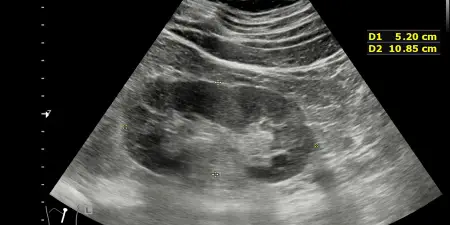Ureteric Stricture

Comprehensive Care for Ureteric Stricture
Ureteric stricture is the narrowing of the ureter, the connecting tube that drains urine from the kidney to the bladder. It also refers to the blockage of the ureter due to scars or inflammation. If left untreated, this urological condition can lead to excruciating flank pain, recurrent urinary tract infections, and even kidney damage.
Ureteric strictures can occur due to kidney stones, chronic inflammation, and prior surgeries, making it a challenging condition that requires prompt and effective intervention.
Dr. Aarthy, Chennai’s leading uro surgeon, has helped hundreds of patients overcome the discomfort and pain of ureteric strictures with her personalised care regimens. She employs cutting-edge imaging techniques to pinpoint the location and severity of your condition accurately. Based on these findings, she creates individualised treatment plans to restore normal urine flow and alleviate the symptoms.
Experience compassionate care tailored just for you with Dr. Aarthy.
Ureteric Stricture
Causes & Symptoms
- The Causes
- The Symptoms
- Scar tissue development following abdominal or pelvic surgeries leads to narrowing of the ureter and results in a stricture.
- Presence of large or recurrent kidney stones leads to irritation and damage to the lining of the ureter, resulting in scarring and constriction.
- Ongoing scar-tissue buildup due to Chronic Urinary Tract Infections (UTIs) or inflammatory conditions like ureteritis.
- Damage to the ureters due to radiation treatment for cancers in the pelvic region.
- Congenitally deformed ureters with structural irregularities can increase their susceptibility to strictures.
- Compression and narrowing of the passage due to cancerous tumour growth in or around the ureter
- Excruciating pain in the back or sides.
- Significant reduction of urine output.
- Recurrent urinary tract infections.
- Weak or interrupted urine stream.
- Hematuria or the presence of blood in the urine.
- Kidney dysfunction leading to vomiting, nausea, and weakness.
Ureteric Strictures: Expert Diagnosis & Care
Diagnosing a ureteric stricture can be challenging, as its symptoms often overlap with those of various other urinary conditions. However, timely and accurate detection is essential to safeguard kidney health and pinpoint the optimal treatment strategy. Recognising the signs early can make all the difference in preventing complications and helping individuals relieve their discomfort.
Treatments for Ureteric Stricture to Restore Urine Flow

Endoscopic Dilation & Balloon Dilatation
Minimally invasive procedure using an endoscope to access the ureter. A small balloon is inserted into the area of narrowing (stricture) and then inflated to widen the ureter, allowing for the free flow of urine. This technique helps restore normal urinary function with minimal discomfort.
Ureteral Stenting
The procedure involves inserting a stent into the ureter to open it, enable a temporary fix to circumvent the blockage, and relieve symptoms. This procedure helps reduce symptoms and prepare the patient for further treatment.
Endoscopic Laser Ablation
A laser accurately cuts and removes the scar tissue responsible for the stricture. This technique is ideal for small, less complicated strictures and facilitates quicker healing.
Ureteroureterostomy
This surgical technique is used for longer or more complicated strictures. It entails excising the narrowed part of the ureter and reconnecting the healthy segments to reestablish normal urine flow.
Pyeloplasty
The surgical removal of a stricture at the ureteropelvic junction of the ureter and the kidney. The eliminated portion is reconstructed to enhance urine drainage.
Robotic-Assisted Reconstructive Surgery
Robotic-assisted reconstructive surgeries are minimally invasive, advanced robotic technology with reconstructive options. This procedure enables quicker recovery, accuracy, and less post-surgical pain.
Long-term stent or Nephrostomy Tube Placement
Surgical procedure that offers temporary relief and prevents kidney damage when emergency surgeries are not feasible during emergencies. In this procedure, a nephrostomy tube or stent redirects urine directly from the kidney.
Get Expert Care for Ureteric Stricture






